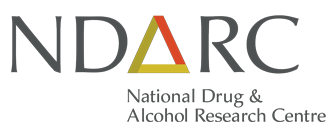
NDARC Technical Report No. 107 (2001)
EXECUTIVE SUMMARY
The 2000 IDRS detected several drug trends during the past 6 to 12 months (ie. between mid 1999 and mid 2000) provided by analyses of the IDU survey, the key informant survey and other secondary indicators. Table 1 contains a summary of information on the price, purity, availability and use of each of the four main drug types monitored by the IDRS.
Heroin: Heroin appears to be highly available, and was cheaper to purchase than in 1999. While heroin purity is still considered high, purity appears to have decreased compared with 1999 and 1998. The use of heroin appears to have increased in the general population. Rock heroin appears to have increased in use and availability.
Amphetamine: Amphetamine appears to be highly available, and the cost of one gram was comparable in price with 1999. Point amphetamine is increasingly available and cheap. Ice, shabu or crystal meth are high grade forms that have increased since 1999. Amphetamine purity has increased with the event of point amphetamine and crystal meth. The use of amphetamine appears to have increased among the general population.
Cannabis: Cannabis appears to be highly available, and price was comparable with 1999, although the median price of one ounce had decreased by around $20. The purity appears to be high according to IDU and key informants, and there are reports of potent hydroponically-grown cultivars being available. The use of cannabis appears to be relatively stable.
Cocaine: Cocaine is difficult to obtain and appears to have fluctuated in availability. The price was comparable with 1999, but it is difficult to make any meaningful comparisons with such small sample sizes in 1999 and 2000. The purity appears to be medium, but was not confirmed by forensic laboratories given that there were no seizures in 2000 in SA. The use of cocaine appears small in South Australia.
Other drug use: Intravenous methadone use appears to have doubled over the last 5 years, and diverted methadone also continues to be used. Benzodiazepine use is widespread but stable among IDU and diazepam is the most popular and used by over half of those who use benzodiazepines. Ecstasy price appears to have slightly decreased, but use is low in this population. The use of antidepressants, hallucinogens and inhalants is stable and low in this population. Other opiate use is also stable and morphine is the most popular. Steroid use is negligible in this population.
Drug related issues: Injection related problems are highly prevalent among IDU, particularly among injectors of methadone syrup. There appears to be an increase in amphetamine related health effects of depression, paranoia, psychosis, aggressive behaviour and poor nutrition. Seventy five percent of IDU had not shared needles in the last month (around 90% in 1999), although fifty percent shared equipment. Around one half of IDU with a lifetime prevalence of heroin use had experienced at least one overdose at sometime in their life, and two thirds had viewed an overdose. Ambulance call-outs to drug-related emergencies had increased over the last 2.5 years, and amphetamine and heroin presentations at the Royal Adelaide Hospital accident and emergency had also increased. Around one half of IDU had committed a crime in the last month (two thirds in 1999) and thirty percent had been arrested in the last 12 months. Local amphetamine production and distribution was increased, and Asian persons are still heavily involved in the heroin market.
Research and policy implications: The findings from the 2000 IDRS have policy and research implications that are outlined below. It is worth noting that some of these issues may have already received attention to date.
- Preparation by agencies for an increase in amphetamine related problems (mental health, drug treatment, social health, law enforcement).
- Health promotion and eduction concerning the adverse effects of amphetamine use.
- Development of an instrument to screen for harmful and hazardous amphetamine use in primary health care settings.
- Development of improved treatment protocols for amphetamine abuse and dependence.
- Research into the chemical analysis of amphetamine, methylamphetamine and designer drug formulations.
- Supply reduction aimed at reducing the number of local amphetamine laboratories and distribution in South Australia.
- Development and implementation of interventions to reduce the frequency and likelihood of heroin overdose, for example, “It’s rarely just the ‘h’” intervention strategy as implemented in 1996 (see McGregor et al. 1999).
- Characterisation and potency testing of cannabis cultivars by AFDL or other laboratories.
- Development and implementation of strategies to reduce behaviour and harms associated with intravenous methadone syrup use.
- Development and implementation of strategies to increase safer use and disposal of needles.
Resources
R. Humeniuk, R. Ali, A. Machin, S. Shimamoto
- Overview
- News
- Our team
- References




